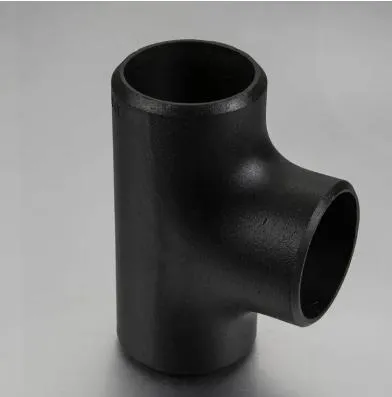-
Cangzhou Yulong Steel Co., Ltd.
-
Phone:
+86 13303177267 -
Email:
admin@ylsteelfittings.com
- English
- Arabic
- Italian
- Spanish
- Portuguese
- German
- kazakh
- Persian
- Greek
- French
- Russian
- Polish
- Thai
- Indonesian
- Vietnamese
- Zulu
- Korean
- Uzbek
- Hindi
- Serbian
- Malay
- Ukrainian
- Gujarati
- Haitian Creole
- hausa
- hawaiian
- Hebrew
- Miao
- Hungarian
- Icelandic
- igbo
- irish
- Japanese
- Javanese
- Kannada
- Khmer
- Rwandese
- Afrikaans
- Albanian
- Amharic
- Armenian
- Azerbaijani
- Basque
- Belarusian
- Bengali
- Bosnian
- Bulgarian
- Catalan
- Cebuano
- China
- China (Taiwan)
- Corsican
- Croatian
- Czech
- Danish
- Esperanto
- Estonian
- Finnish
- Frisian
- Galician
- Georgian
- Kurdish
- Kyrgyz
- Lao
- Latin
- Latvian
- Lithuanian
- Luxembourgish
- Macedonian
- Malgashi
- Malayalam
- Maltese
- Maori
- Marathi
- Mongolian
- Myanmar
- Nepali
- Norwegian
- Norwegian
- Occitan
- Pashto
- Dutch
- Punjabi
- Romanian
- Samoan
- Scottish Gaelic
- Sesotho
- Shona
- Sindhi
- Sinhala
- Slovak
- Slovenian
- Somali
- Sundanese
- Swahili
- Swedish
- Tagalog
- Tajik
- Tamil
- Tatar
- Telugu
- Turkish
- Turkmen
- Urdu
- Uighur
- Welsh
- Bantu
- Yiddish
- Yoruba

Nov . 29, 2024 14:35 Back to list
Flange Standards and Specifications for ANSI 150 Class Applications in Various Industries
Understanding Flange 206 ANSI 150 A Comprehensive Guide
Flanges are critical components in various piping systems, connecting two sections of pipe or a pipe to a valve, pump, or other equipment. Among the myriad standards and specifications pertaining to flanges, the ANSI (American National Standards Institute) 150 is particularly significant due to its widespread usage in industrial applications. In this article, we will delve into the specifics of the Flange 206 ANSI 150, its specifications, applications, and importance in engineering and infrastructure.
What is a Flange?
A flange is a mechanical component that provides a method of joining two sections of pipe or connecting a pipe to other equipment. Flanges are typically made from materials such as carbon steel, stainless steel, or other alloys, and they are designed to provide a leak-proof connection that can withstand various pressures and temperatures. They come in different sizes, shapes, and types, catering to diverse industrial needs.
ANSI Standards Explained
ANSI is a nonprofit organization that oversees the establishment and promulgation of standards for various products and systems in the United States. The American National Standards for flanges are crucial as they ensure compatibility, safety, and reliability across different manufacturers and applications. The ANSI 150 standard specifically pertains to the pressure-temperature ratings for flanges, indicating how much pressure a flange can handle at a given temperature.
Features of Flange 206 ANSI 150
The Flange 206 ANSI 150 is a type of slip-on flange designed for use with pipes conforming to the ANSI B36.10 and B36.19 standards. Some of the prominent features of this flange include
1. Material Versatility It can be fabricated from various materials, including carbon steel, stainless steel, and alloy steel, depending on the specific application and environmental considerations.
2. Pressure Ratings The ANSI 150 designation signifies that the flange is rated for a maximum pressure of 150 psi at a temperature of 100°F. As the temperature increases, the pressure rating decreases. Understanding this relationship is crucial for engineers designing systems that will operate at varying temperatures and pressures.
flange 6 ansi 150

3. Dimensions The Flange 206 ANSI 150 comes with specific dimensional criteria, such as bolt holes, thickness, and outer diameter, making it important to adhere to these standards to ensure compatibility with connecting pipes and other components.
4. Ease of Installation The slip-on design allows for easy alignment and welding, making installation simpler while ensuring the integrity of the joint.
Applications of Flange 206 ANSI 150
Flange 206 ANSI 150 finds application across various industries
- Oil and Gas In crude oil and gas extraction and transportation, the Flange 206 ANSI 150 is often used due to its reliability under pressure. - Water Treatment These flanges are instrumental in water treatment plants, where they connect pipes carrying water, chemicals, and other fluids. - Chemical Processing In the chemical industry, the Flange 206 can withstand certain corrosive environments, making it a preferred choice for transferring various chemicals safely. - HVAC Systems The HVAC industry utilizes ANSI flanges for efficient connection of piping in heating and cooling systems.
Importance in Engineering
Understanding the specifications and applications of Flange 206 ANSI 150 is essential for engineers and designers in ensuring that their piping systems operate efficiently and safely. Using the correct flange type not only helps in achieving the desired mechanical strength but also plays a significant role in preventing leaks and system failures.
Moreover, adherence to ANSI standards is critical for regulatory compliance, allowing companies to meet safety requirements and industry benchmarks. Proper training in flange selection and installation techniques can aid in maintaining the integrity of the entire piping system.
Conclusion
In conclusion, Flange 206 ANSI 150 represents a vital element in the infrastructure of many industries. Understanding its features, applications, and importance is crucial for engineers and technicians tasked with designing and maintaining piping systems. By adhering to ANSI standards, industries can ensure safety, compatibility, and functionality, which are paramount in today's engineering landscape. Whether in oil and gas, water treatment, or chemical processing, the Flange 206 ANSI 150 will continue to play a pivotal role in ensuring the success of industrial operations.
Latest news
-
ANSI 150P SS304 SO FLANGE
NewsFeb.14,2025
-
ASTM A333GR6 STEEL PIPE
NewsJan.20,2025
-
ANSI B16.5 WELDING NECK FLANGE
NewsJan.15,2026
-
ANSI B16.5 SLIP-ON FLANGE
NewsApr.19,2024
-
SABS 1123 FLANGE
NewsJan.15,2025
-
DIN86044 PLATE FLANGE
NewsApr.19,2024
-
DIN2527 BLIND FLANGE
NewsApr.12,2024
-
JIS B2311 Butt-Welding Fittings LR/SR 45°/90° /180°Seamless/Weld
NewsApr.23,2024











